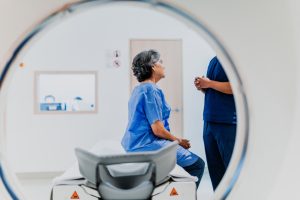 When it comes to welcoming a new sibling, children can have a variety of reactions depending on their age. They can be happy and excited, sad, angry, and upset. Knowing what to expect from each age group can make handling the changes in your family easier.
When it comes to welcoming a new sibling, children can have a variety of reactions depending on their age. They can be happy and excited, sad, angry, and upset. Knowing what to expect from each age group can make handling the changes in your family easier.
Here is some information from the American Academy of Pediatrics to help parents prepare older siblings for a new sibling:
For children aged one to two years
- They may not understand what it means to have a new sibling. However, you can bring up the topic with your child so they can get used to it. It is also important to reassure them that they are loved.
- You can read children’s books about newborns and siblings with your older child before the new baby arrives so they can become familiar with words such as sister, brother, and new baby.
- Once the new baby arrives, be mindful of spending time with your older child. You can make them feel special by giving them a special gift and spending one-on-one time with them.
For children aged two to four years
- They are learning to share with others and may feel the need to compete for your attention. Therefore, it is important to explain to your older child that there will be times when you will need to take care of the new baby first. They may also have difficulty adjusting to changes in your family’s routine.
- Find chances to talk about the new baby before the new baby arrives. You can mention that a new baby will be in the family when you start buying nursery furniture or baby clothes or when your child asks about Mom’s growing belly. Continue to read children’s books about newborns and siblings with your older child.
- Remind your older child about when they were a baby, by showing them their baby pictures. If you use some of their old things for their new sibling, let them play with them for a bit before they get ready for the new baby.
- Be honest with your older child. Explain that the baby will be cute, but will also cry and take a lot of your time and attention. It is important to let your older child know that it may be a while before they can play with the new baby and that they will need to be gentle when they play or help care for the baby.
- Involving your older child in planning for the baby will make them less jealous.
- Time the major changes in your older child’s routine. Finish toilet training or switching from a crib to a bed before the baby arrives if possible. If it isn’t possible, wait until after the baby is settled at home.
- Expect your older child to regress a little after the new baby arrives. Older children may return to an earlier stage in their development when a new baby arrives.
- Set aside some special time for your older child. You can read to them, play games with them, listen to music with them, or talk with them. Show them that you love them, and want to do things with them.
- To make your older child feel included, find ways to invite them to help with the new baby.
- When family and friends visit the new baby, ask them to spend time with your older child to help them feel special and not left out.
For children who are older than five years
- They are usually not as threatened by a new baby as younger children are. However, they may resent the attention the new baby gets.
- Tell your older child what is happening in words they can understand before the new baby arrives. Explain what having a new baby means and what changes may affect them.
- Have your child help prepare for the new baby by having them help fix up the baby’s room, pick out clothes, or buy diapers.
- After the new baby arrives, have someone bring your older child to the hospital to meet their new sibling, if they are not already there. This will help them feel that they are part of the growing family.
- Help your older child feel that they have a role to play in caring for the baby when the new baby is brought home.
- Don’t overlook your older child’s needs and activities.
Please be mindful that children have different personalities that may affect how they respond to the new baby.
Preparing your older child for the arrival of a new baby can be challenging, but following these recommendations can make the transition much easier.
All content of this newsletter is intended for general information purposes only and is not intended or implied to be a substitute for professional medical advice, diagnosis or treatment. Please consult a medical professional before adopting any of the suggestions on this page. You must never disregard professional medical advice or delay seeking medical treatment based upon any content of this newsletter. PROMPTLY CONSULT YOUR PHYSICIAN OR CALL 911 IF YOU BELIEVE YOU HAVE A MEDICAL EMERGENCY.










